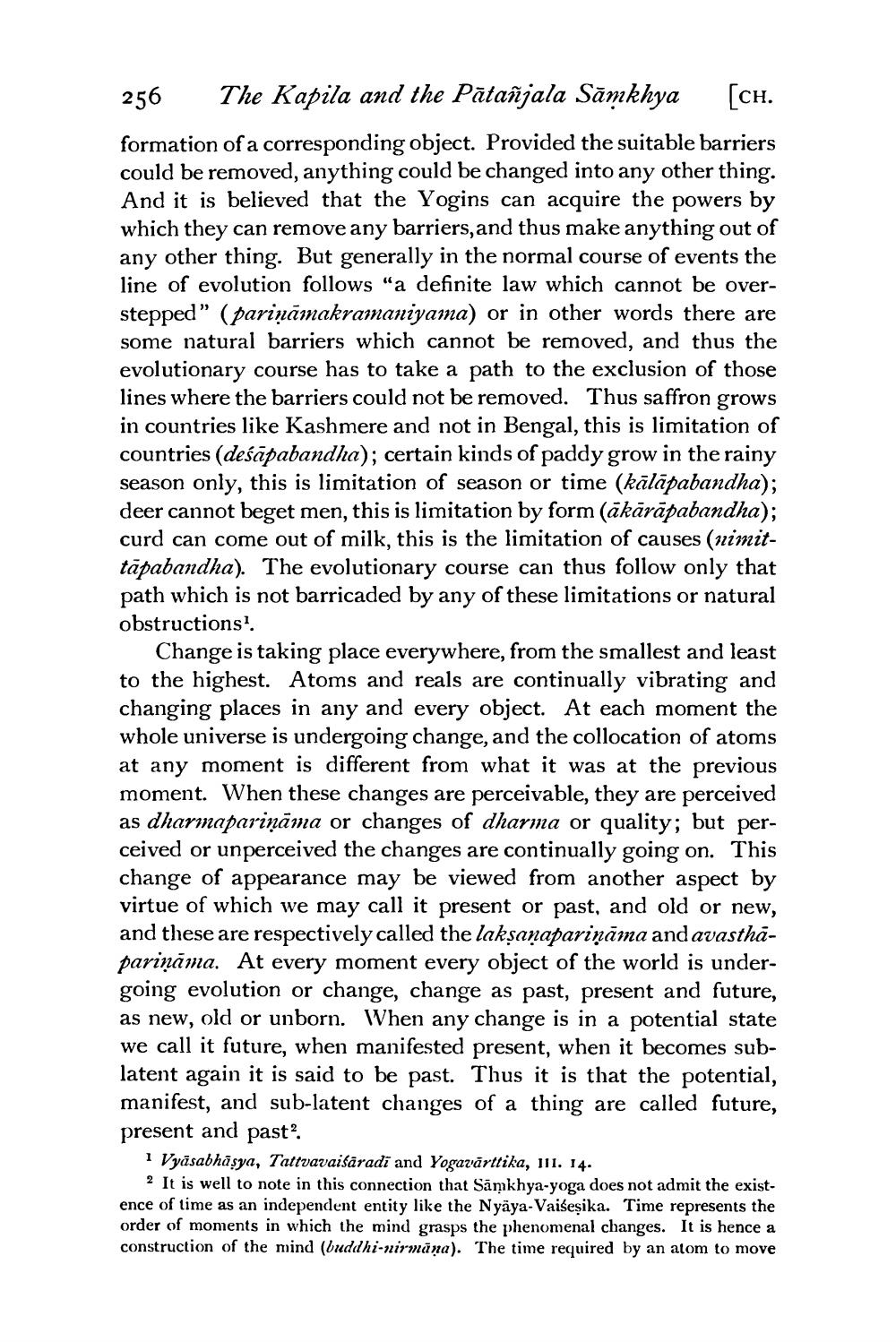________________
256 The Kapila and the Pātañjala Sāmkhya [CH. formation of a corresponding object. Provided the suitable barriers could be removed, anything could be changed into any other thing. And it is believed that the Yogins can acquire the powers by which they can remove any barriers, and thus make anything out of any other thing. But generally in the normal course of events the line of evolution follows "a definite law which cannot be overstepped” (parināmakrainaniyaina) or in other words there are some natural barriers which cannot be removed, and thus the evolutionary course has to take a path to the exclusion of those lines where the barriers could not be removed. Thus saffron grows in countries like Kashmere and not in Bengal, this is limitation of countries (deśāpabandha); certain kinds of paddy grow in the rainy season only, this is limitation of season or time (kālāpabandha); deer cannot beget men, this is limitation by form (ākārāpabandha); curd can come out of milk, this is the limitation of causes (nimittāpabandha). The evolutionary course can thus follow only that path which is not barricaded by any of these limitations or natural obstructions?
Change is taking place everywhere, from the smallest and least to the highest. Atoms and reals are continually vibrating and changing places in any and every object. At each moment the whole universe is undergoing change, and the collocation of atoms at any moment is different from what it was at the previous moment. When these changes are perceivable, they are perceived as dharmapariņāma or changes of dharma or quality; but perceived or unperceived the changes are continually going on. This change of appearance may be viewed from another aspect by virtue of which we may call it present or past, and old or new, and these are respectively called the laksanaparināma and avasthapariņāma. At every moment every object of the world is undergoing evolution or change, change as past, present and future, as new, old or unborn. When any change is in a potential state we call it future, when manifested present, when it becomes sublatent again it is said to be past. Thus it is that the potential, manifest, and sub-latent changes of a thing are called future, present and past?
i Vyasabhâsya, Tattvavaisāradī and Yogavārttika, 111. 14.
2 It is well to note in this connection that Samkhya-yoga does not admit the existence of time as an independent entity like the Nyäya-Vai esika. Time represents the order of moments in which the mind grasps the phenomenal changes. It is hence a construction of the mind (buddhi-nirmāna). The time required by an atom to move




